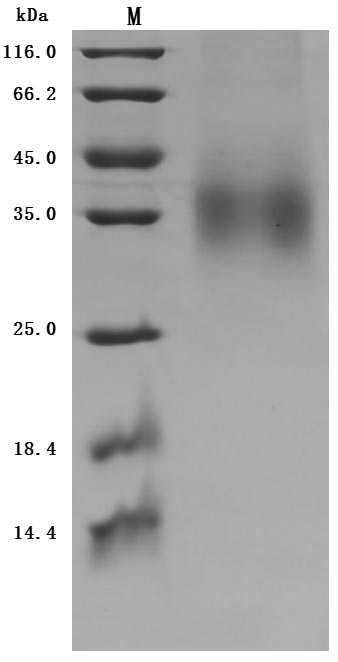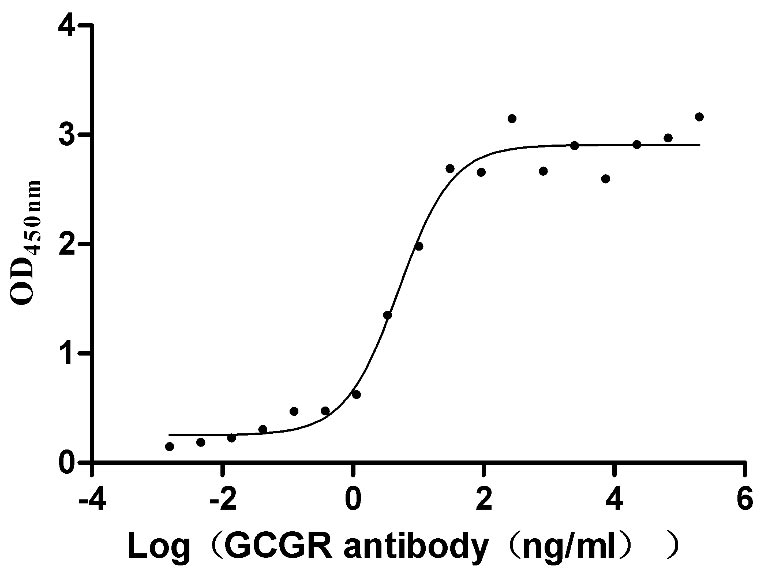Mammalian cell-expressed recombinant human GCGR is a partial length protein tagged with a 10xHis motif at the N-terminus and a Myc motif at the C-terminus. Its DNA sequence corresponds to amino acids 26-136 of the human GCGR. This GCGR protein has high purity, greater than 95% determined by SDS-PAGE. It migrated to the molecular weight band of about 32 kDa on the gel. Its endotoxin content is less than 1.0 EU/ug measured by the LAL method. It is also biologically active and its activity has been validated through a functional ELISA by binding to the anti-GCGR antibody. And it is in stock now.
GCGR, a member of class B GPCR, combines with the natural ligand glucagon to regulate blood glucose homeostasis. It is an important drug target for type II diabetes. A series of drugs targeting GCGR have been developed to relieve hyperglycemia in diabetic patients, including GCGR antagonists, antibodies, and antisense oligonucleotides of GCGR.








